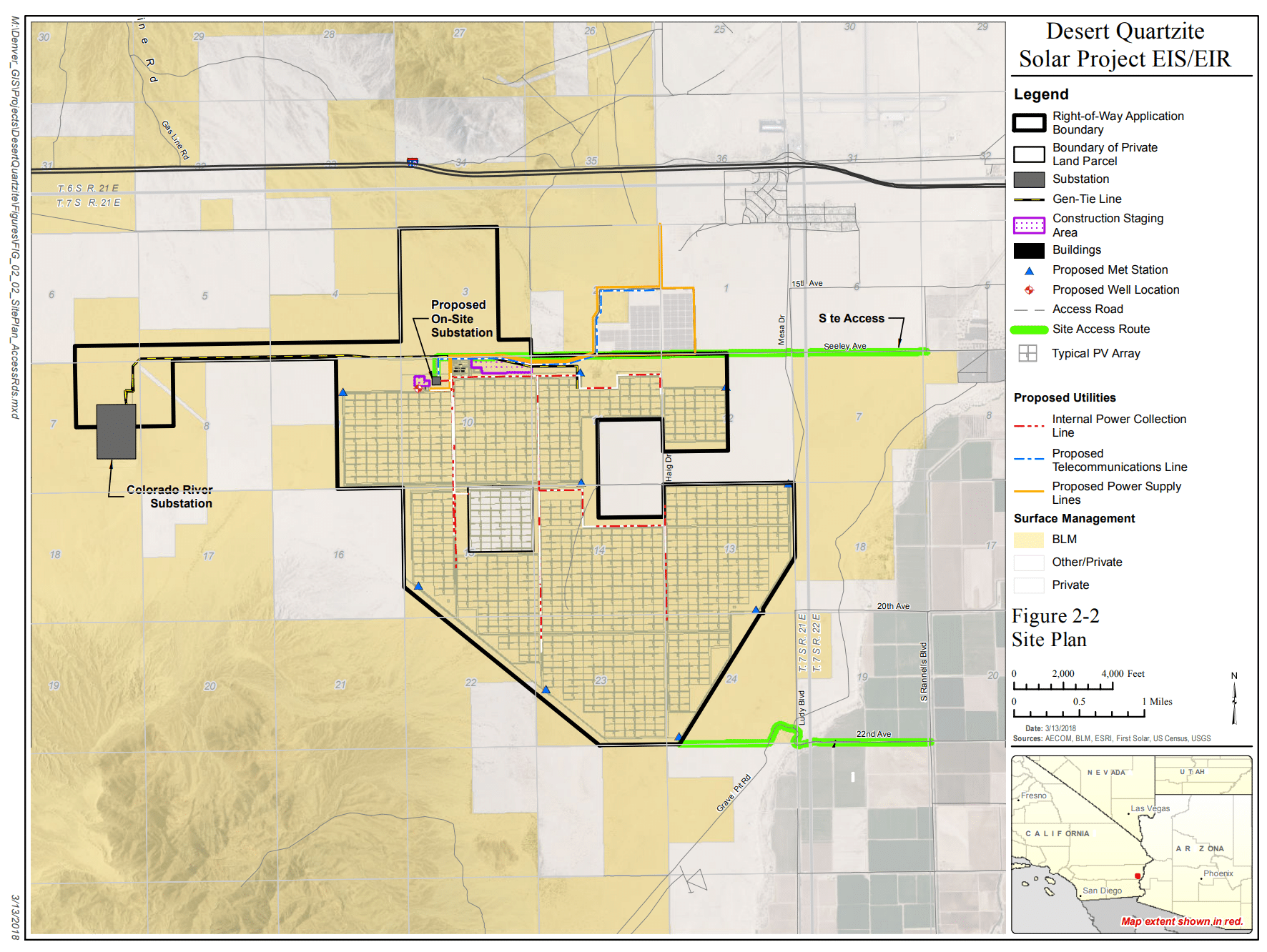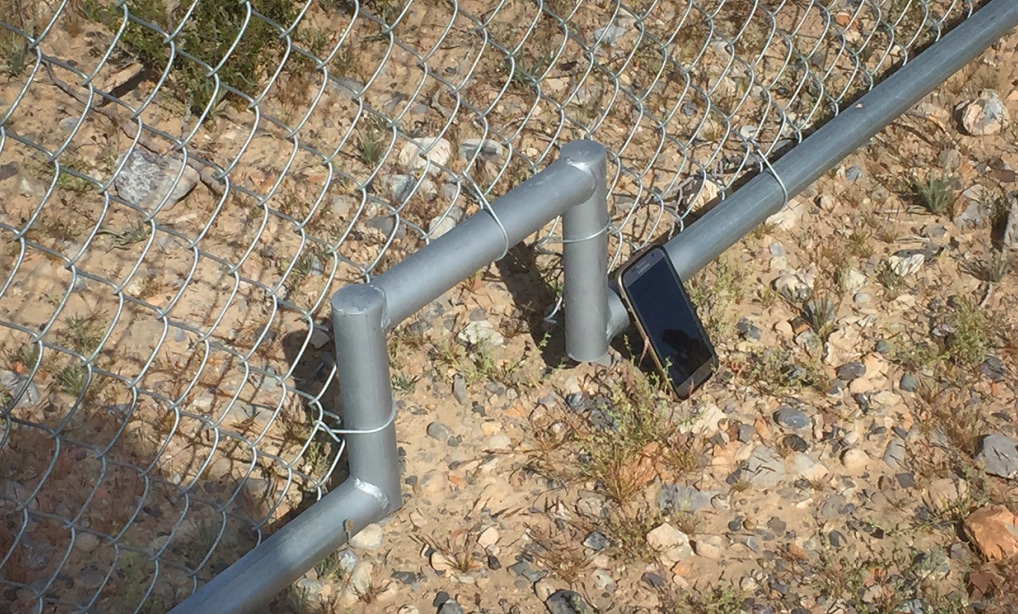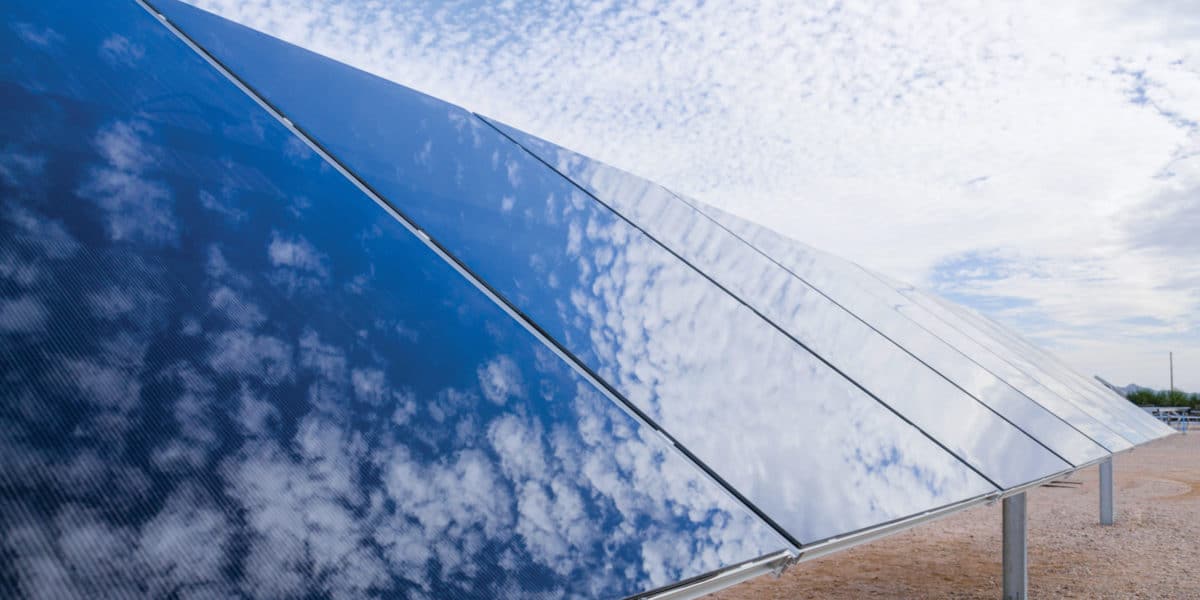The U.S. Department of the Interior’s Bureau of Land Management (BLM) has given a preliminary, but close to final, environmental approval for First Solar’s 450 MWac Desert Quartzite solar power plant.
The BLM published a Notice of Availability for the project, which opens a 30-day protest period and a 60-day governor’s consistency review. As part of the notice, documents – specifically the “Final Environmental Impact Statement and Environmental Impact Report (EIS/EIR)” and the “California Desert Conservation Area Land Use Plan Amendment – have been made available on the project’s department page. Pending the outcome of the review of these documents, the BLM will issue a final Record of Decision – an approval to move ahead. A draft is available here and from the BLM’s perspective — this project has been approved.
BLM documents suggests the site is capable of producing 2.25 billion kWh, equivalent to the demand of 117,000 California homes. That would compute to a less-than-believable 57% AC capacity factor based on 450 MWac. First Solar told pv magazine USA that the value wasn’t correct.
First Solar says it’ll take two-and-a-half years to build the site, coming online by the end of 2022, at a cost of $1 billion. About $72.5 million in annual economic activity will be generated during construction and about $2.7 million in annual rent and fees will be paid to the U.S. Treasury.

The major challenges in the project were environmental. This appendix to the the environmental review contains a few dozen maps including the site plan above describing animal habitats, noise issues, airport considerations, hydrology reports and a lot more that had to be considered as part of the development.
Deep within one of the reports, the BLM noted certain received comments expressing concerns about the potential impact of the proposed project on communities in the area, including:
- Adverse impact on lands recently gained by the tribes in the area near Interstate 10.
- The potential for terrorists to hide under the solar panels.
- The potential for destruction of property.
As part of the broader environmental review of the last two years, the project’s footprint was reduced by more than 1,000 acres to account for the potential impact on wildlife. Included in the review was significant consideration of desert tortoises, which pv magazine USA has recently covered, along with how the solar industry is working to co-exist with wildlife.

This content is protected by copyright and may not be reused. If you want to cooperate with us and would like to reuse some of our content, please contact: editors@pv-magazine.com.








First Solar makes the series 6 solar modules that are made out of CADMIUM. TELLURIDE. These panels have to be recycled as HAZARDOUS WASTE and therefore should never be used for any desert array.
It is the people of California who would have to pay to recycle these.
Recycling these panels is a known quantity. They’ve been able to withstand a tornado without polluting the environment. As well, First Solar has one of the best recylcing programs globally for solar panels.
Whenever people poses challenges to the PV projects, they list anything they can think that I know they could have done same thing to fossil fuel powerplant projects like air qualtiy , etc.. DER programs also allows industrial generators without any concern about breathing fumes and associated ground shaking vibrations associated with the operation of industrial generators if any.
People ought to know that breathing fumes from fossil and firewood can cause cancer !
Terrorists hiding under solar panels are the danger, or climate change, it’s one of those.
They are usually fenced off and under survelliance like any other place like your favorite coal powerplant, for example.
“Adverse impact on lands recently gained by the tribes in the area near Interstate 10”.
“The potential for terrorists to hide under the solar panels.”
“The potential for destruction of property.”
Yeah, you might find a desert Tortoise hiding under the solar panels.
Adverse impact on “tribal” lands…
There’s one guy and his grandson that believe this entire area near Blythe is the “cradle of the Mayan civilization”. Anyone who has taken a day trip out in this area knows that is total B.S..
“Potential destruction of property.”
Most of this land is BLM land, the ‘Government’ can tell YOU where to off road, but leveling 10,000 acres, no problem.
As far as the desert tortoises are concerned, if the BLM and Fish and Game would let hunters go out and drastically reduce the population of crows that fly through the desert looking for food, the population of desert tortoises, quail and dove would increase.